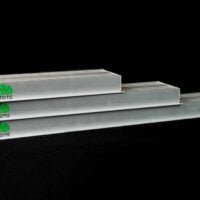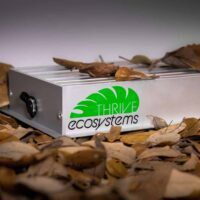Introduction
Lighting is a crucial component in creating a healthy and vibrant bioactive terrarium. In addition to providing necessary light for plant growth, proper lighting also plays a significant role in the behavior of the animals that inhabit the enclosure. Understanding the importance of lighting can help ensure a successful setup that meets the needs of both plants and animals.
Lighting is essential for photosynthesis, the process by which plants produce energy from sunlight. Without adequate light, plants cannot perform photosynthesis efficiently, which can result in stunted growth and a decline in overall health. This can have a ripple effect on the entire ecosystem of the terrarium, as plants provide food and shelter for the animals that live there. In addition to providing energy for photosynthesis, light also helps regulate the circadian rhythms of plants, which can impact their growth and development.
Lighting also plays a crucial role in the behavior of the animals in the terrarium. Many species of reptiles and amphibians require specific wavelengths of light to regulate their behavior, such as thermoregulation, feeding, and reproduction. The right type of lighting can help mimic the natural environment of the animals, helping them to feel more comfortable and thrive in their enclosure. Additionally, lighting can also impact the sleep cycle of nocturnal animals, which may become stressed or lethargic without proper lighting conditions.
When it comes to choosing the right lighting for a bioactive terrarium, there are several factors to consider. The intensity, duration, and spectrum of light all play a role in creating a healthy environment for plants and animals. For example, some species of plants require higher levels of light than others, while some animals may need UVB lighting to metabolize calcium. It is also important to consider the placement and timing of the lighting, as too much or too little light can cause stress or health issues for the inhabitants of the terrarium.
Proper lighting is a critical component in creating a healthy and thriving bioactive terrarium. From promoting plant growth to regulating animal behavior, the right type of lighting can have a significant impact on the overall success of the enclosure. By understanding the specific lighting needs of the plants and animals in the terrarium, hobbyists can create an environment that meets the needs of all the inhabitants and provides a stunning and functional display.
Bundled lights with vivariums, also known as all-in-one kits, are a popular option for those who are new to the hobby or looking for a convenient setup. These kits typically come with a vivarium enclosure and lighting fixtures included. While they can be a great option for beginners, it’s important to note that the lighting included in these kits may not be suitable for all plant and animal species. Additionally, some kits may not offer the flexibility to adjust lighting based on specific needs or preferences. It’s important to do your research and consider the specific requirements of your plant and animal species before purchasing a bundled vivarium kit. Frogsdirect.com offers Insitu Amazonia and Alto Viariums which come with Lights included.
-
Sold By: Thrive Ecosystems
Build your own light system 5-6 Week Backorder
Sold By: Thrive Ecosystems$15.00 -
Sold By: Thrive Ecosystems
Thrive Ecosystems 18″ Double LED Vivarium Light ( Double Fixture – 32 Watt)
Rated 5.00 out of 502Sold By: Thrive Ecosystems$139.99$149.99Sold By: Thrive EcosystemsThrive Ecosystems 18″ Double LED Vivarium Light ( Double Fixture – 32 Watt)
$139.99$149.99Add to cart -
Sold By: Thrive Ecosystems
Thrive Ecosystems 24″ LED Vivarium Light (Single – 26 Watt)
Sold By: Thrive Ecosystems$89.99$99.99Sold By: Thrive EcosystemsThrive Ecosystems 24″ LED Vivarium Light (Single – 26 Watt)
$89.99$99.99Add to cart -
Sold By: Thrive Ecosystems
Thrive Ecosystems 12″ LED Vivarium Light (Quad Fixture – 54 Watt)
Rated 5.00 out of 501Sold By: Thrive Ecosystems$179.99$199.99Sold By: Thrive EcosystemsThrive Ecosystems 12″ LED Vivarium Light (Quad Fixture – 54 Watt)
$179.99$199.99Add to cart -
Sold By: Thrive Ecosystems
Thrive Ecosystems 12″ LED Vivarium Light (Double Fixture – 27 Watt)
Sold By: Thrive Ecosystems$99.99$109.99Sold By: Thrive EcosystemsThrive Ecosystems 12″ LED Vivarium Light (Double Fixture – 27 Watt)
$99.99$109.99Add to cart -
Sold By: Thrive Ecosystems
Thrive Ecosystems 18″ LED Vivarium Light (Single 20 – Watt)
Sold By: Thrive Ecosystems$79.99$89.99Sold By: Thrive EcosystemsThrive Ecosystems 18″ LED Vivarium Light (Single 20 – Watt)
$79.99$89.99Add to cart
Fluorescent Lights: Fluorescent lights are a popular choice for indoor plants and can be used in bioactive terrariums as well. They are energy efficient, affordable and available in various spectrums. However, they can be bulky and not as durable as other options.
Incandescent Lights: Incandescent lights are the most common type of light bulb and can be found in most homes. They are inexpensive and emit a warm glow that can enhance the colors of plants and animals. However, they are not very energy efficient and can get quite hot, which can be dangerous for some animals.
Halogen Lights: Halogen lights are similar to incandescent lights but are slightly more energy efficient and produce a brighter light. They are available in a variety of wattages and can be used in bioactive terrariums with caution due to their heat output.
LED Lights: LED lights are becoming the most popular choice for bioactive terrariums because they are energy efficient, long-lasting, and can provide a full spectrum of light. They emit very little heat, which makes them safer for animals, and are available in various colors and brightness levels.
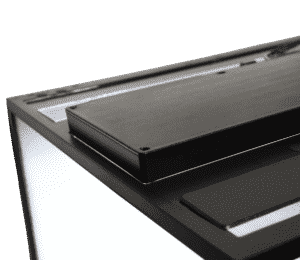
Proper lighting is crucial for the health and wellbeing of both plants and animals in a bioactive terrarium. While there are various types of lighting available, LED lighting is generally considered the best option for a dart frog habitat.
LED lighting provides a full spectrum of light that closely mimics natural sunlight, which is essential for the proper growth and development of plants in a bioactive terrarium. Additionally, LED lights emit very little heat compared to other types of lighting, which helps to maintain a stable temperature in the terrarium. This is especially important for dart frogs, as they require a consistent temperature and humidity level to thrive.
Moreover, LED lights use significantly less electricity than other types of lighting, making them an eco-friendly and cost-effective option for terrarium owners. In contrast, halogen lights, which emit a lot of heat, can cause the temperature in the terrarium to become too high, which can be dangerous for both plants and animals. Similarly, fluorescent lights may not provide a full spectrum of light, and their bulbs need to be replaced more frequently than LED bulbs.
While there are some debates about the best lighting for dart frogs, most hobbyists and experts in the field agree that LED lighting is the way to go. In a video by Black Jungle Terrarium Supply, owner Paul Coakley states, “LED lighting is becoming more and more popular with dart frog enthusiasts because they are low-heat, energy-efficient, and there’s no need to replace bulbs for many years.”
Another source of information is the Dartden.com, a popular online forum for dart frog enthusiasts. Many users recommend LED lighting for their terrariums, citing the benefits of low heat output and cost-effective energy consumption. For example, one user states, “I use LED lights in all my terrariums, and I’ve noticed a significant difference in plant growth and energy costs.”
In summary, while there are various types of lighting available for bioactive terrariums, LED lighting is generally considered the best option for dart frog habitats. LED lights provide a full spectrum of light, emit very little heat, use less electricity, and are cost-effective. With the popularity of LED lighting growing in the hobbyist community, it’s clear that it’s a great option for any terrarium owner looking to provide optimal lighting for their plants and animals.
Factors to Consider when Choosing Lighting
Lighting is an essential component of a bioactive terrarium. When selecting lighting for a bioactive terrarium, there are several factors to consider. The specific needs of the plants and animals in the terrarium, the size and dimensions of the terrarium, and the amount of natural light the terrarium receives are some of the factors that must be taken into account.
When considering lighting for dart frogs, it is essential to keep in mind that different species have different requirements. Research has shown that some dart frog species, such as Oophaga histrionica, may benefit from exposure to UV light. A study published in the Journal of Zoo and Aquarium Research found that O. histrionica showed improved growth rates and skin coloration when exposed to UV light. The researchers hypothesized that UV light may play a role in vitamin D synthesis, which is essential for healthy growth and development.
When selecting lighting for a bioactive terrarium, it is essential to choose a light that provides a full spectrum of light. LED lights are an excellent choice for a bioactive terrarium as they offer a full spectrum of light and are cooler than other types of lighting, which reduces the risk of overheating the terrarium. Additionally, LED lights are energy-efficient, which can result in significant savings on energy costs over time.
The size and dimensions of the terrarium are also crucial factors to consider when selecting lighting. The size of the terrarium will determine the amount of lighting needed to provide adequate coverage. A larger terrarium will require more lighting to ensure that all areas of the terrarium receive the appropriate amount of light.
Another factor to consider is the amount of natural light the terrarium receives. If the terrarium is located in an area that receives a significant amount of natural light, the amount of supplemental lighting required may be less than if the terrarium is located in an area with limited natural light. However, it is still essential to provide adequate lighting to ensure that all areas of the terrarium receive the appropriate amount of light.
In conclusion, choosing the right lighting for a bioactive terrarium is essential for the health and well-being of the plants and animals in the terrarium. When selecting lighting, it is essential to consider the specific needs of the plants and animals, the size and dimensions of the terrarium, and the amount of natural light the terrarium receives. LED lights are an excellent choice for a bioactive terrarium, as they provide a full spectrum of light, are energy-efficient, and do not produce excess heat. By considering these factors, hobbyists can create a healthy and thriving bioactive terrarium for their dart frogs and other inhabitants.

Want some Detail?
Photosynthetically Active Radiation (PAR) is the range of wavelengths within the visible light spectrum that is utilized by plants for photosynthesis. This range is typically between 400 to 700 nanometers (nm), with a peak around 450-500 nm for blue light and 600-700 nm for red light. PAR is an important metric for measuring the effectiveness of light sources for plant growth.
Lumens, on the other hand, are a unit of measurement for the total amount of visible light emitted by a light source. Lumens do not take into account the spectrum of light emitted by the source, so it is not an accurate measure of the light’s effectiveness for plant growth. In fact, a light source can emit a large number of lumens, but only a small amount of that light may be in the PAR range that is actually useful for plant photosynthesis.
For this reason, PAR is a superior metric for measuring the effectiveness of lighting for plant growth. PAR meters, also known as quantum meters, are specifically designed to measure the amount of PAR emitted by a light source. PAR meters typically provide readings in micromoles of photons per square meter per second (μmol/m²/s), which is a more accurate representation of the amount of light available for photosynthesis.
In addition to PAR, other factors to consider when choosing lighting for a bioactive terrarium include the color temperature of the light source and the intensity of the light. Color temperature is measured in Kelvin (K) and refers to the perceived color of the light emitted by a source. Light sources with a higher color temperature (such as 5000K-6500K) have a bluer, cooler appearance, while sources with a lower color temperature (such as 2700K-3500K) have a warmer, reddish appearance.
Light intensity, measured in lux or foot-candles, is the amount of light that reaches a specific area in the terrarium. The intensity required will depend on the size and dimensions of the terrarium, as well as the specific needs of the plants and animals. It’s important to balance the intensity of the light with the PAR requirements of the plants to avoid overexposure or underexposure.
-

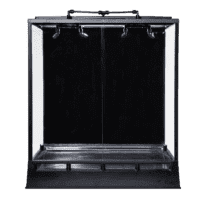 Quick ViewSelect options
Quick ViewSelect options
-


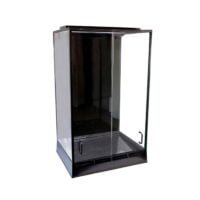 Quick ViewAdd to cart
Quick ViewAdd to cart
Setting up Proper Lighting
- Choose an LED fixture with the appropriate spectrum for your plants and animals.
- Mount the fixture above the terrarium, at a distance of 6-12 inches from the top of the plants.
- Set the timer to provide 12-14 hours of light per day.
Maintaining Lights
- Clean the reflectors regularly to remove dust and dirt that can reduce light output.
- Replace bulbs every 6-12 months to ensure they are providing the appropriate spectrum and intensity.
- Monitor the temperature of the fixture to ensure it is not overheating the terrarium.
- Use a timer to ensure consistent and appropriate light cycles for your plants and animals.

